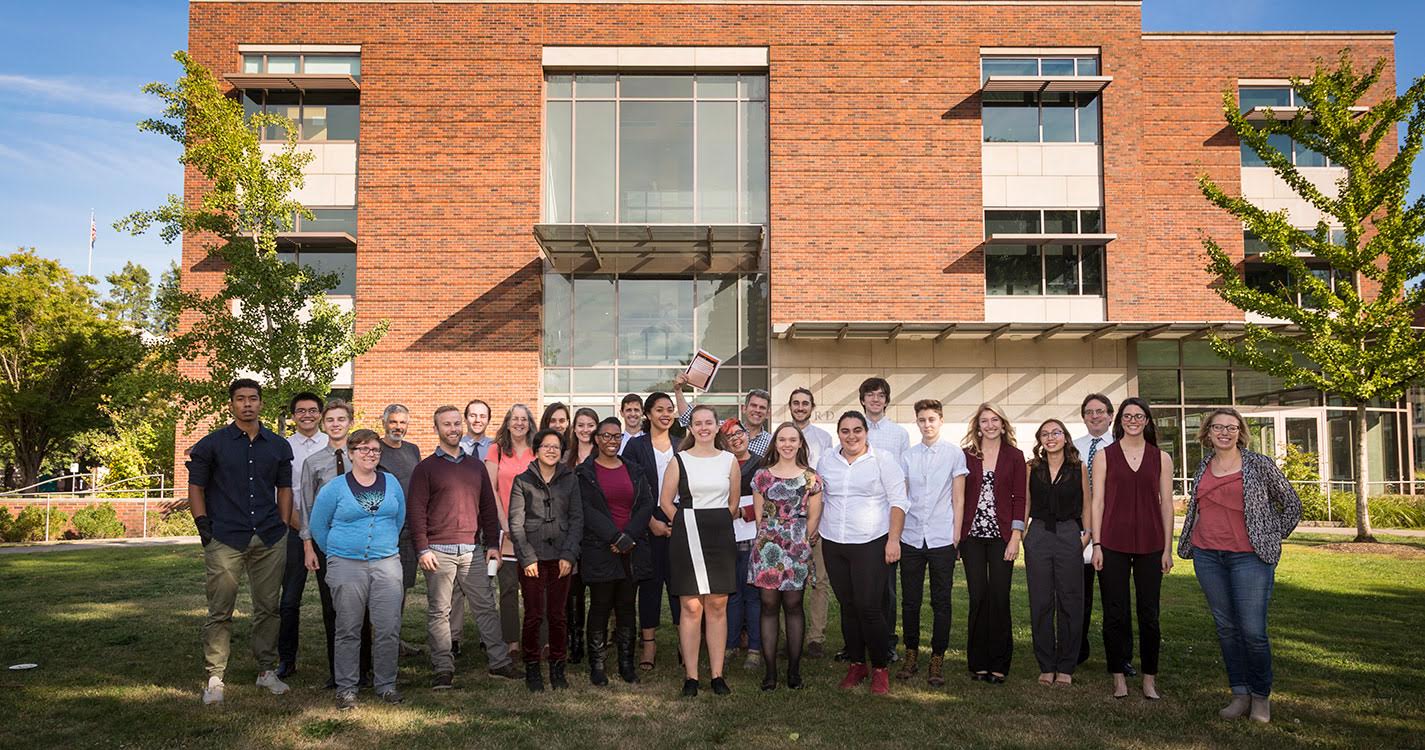Derek Lund and Paige Yeakle’s research helped predict when the conditions are ripe for a potentially fatal virus to strike a part of the United States — and they did it as undergraduates.
Through Willamette’s Science Collaborative Research Program (SCRP), Lund ’18 and Yeakle ’19 studied the impact of climate change on dengue fever, the world’s most prevalent mosquito-borne disease that affects an estimated 390 million people per year. Once viewed as a distant threat found in tropical climates, the virus has re-emerged in the southern United States.
Lund, an environmental earth science major, and Yeakle, a double major in psychology and women and gender studies, were among nine students making original discoveries last summer through SCRP, which pairs undergraduates with supervising faculty members to work on real research.
Every year, SCRP students dive into research that covers diverse topics within science, technology, engineering and math fields. Students deliver an oral presentation on their work, present their findings at a symposium and meet with other students for weekly picnics to discuss everyone’s research.
Lund loved working with his advisor, Assistant Professor of Environmental and Earth Sciences Melinda Butterworth, who has long researched the topic. He says, “Every time I hit a wall or setback with research, she made sure to reinforce that these things happen to all researchers — it is difficult, constantly evolving and rewarding in the end. It is important to stay patient and stay engaged.”
Real research
In their project, Lund and Yeakle found that by 2090, across all greenhouse gas emission scenarios used in the study, the warmer climate in six port cities — Houston, New Orleans, Miami, Savannah, Norfolk and Philadelphia — will allow for longer mosquito seasons and support transmission of the virus that causes dengue fever. Most of these cities haven’t seen the disease in decades.
Another SCRP project focused on Type II diabetes, the potentially life-threatening condition that continues to increase across all age groups worldwide. Elisabeth Simonovich ’19 and advisor Luke Ettinger, assistant professor of exercise science, wanted to find out if Type II diabetics, who often have numbness in their feet and and an increased risk of falling, have a decreased spatial awareness of their lower body.
They collected data on more than three dozen people — half Type II diabetics and half not — who ranged in age from 43 to 80 years old. In a series of tests, participants closed their eyes and performed movements such as raising and lowering their leg. As Simonovich and Ettinger had hypothesized, the diabetics were less aware of the position and spatial location of their legs.
Surprising discoveries
Simonovich, like other SCRP students, also encountered the unexpected. As a chemistry major, she wasn’t particularly interested in research — especially because her sister is a researcher, and, as she says, “Whenever my sister is interested in something, it immediately makes it not interesting to me.”
When her colloquium advisor suggested SCRP, Simonovich decided to give it a whirl. After digging into the research, she completely changed her mind.
“In chemistry, I was working with molecules and atoms,” she says. “But here, I was working and interacting with people … I was amazed at how much I loved doing everything I did, and the research field is now something I’m considering.”
For Lund, the biggest surprise emerged during the research process. For their study, he and Yeakle created spreadsheets of weather data under various climate change scenarios. They also funneled enormous amounts of climate data into software that helped them predict mosquito totals and weather at each site in 2020, 2050 and 2090.
While doing background research, Lund discovered researchers identified a dengue fever outbreak in Houston in the mid-2000s. But no one knew about it until two years later, when health officials tested and confirmed the presence of the disease in blood samples.
Lund says, “Even more shocking is that medical staff across Houston (at the time) were not able or willing to diagnose patients with dengue.”
David Craig, professor of biology and SCRP director, says such discoveries are part of what makes the program so beneficial to students, who can use their SCRP experiences program to launch into high-paying math and science jobs after graduation. Sometimes, the benefits are more immediate. Thanks to their participation in SCRP, Lund and Yeakle will present their research next month at the annual Murdock College Science Research Conference in Spokane, Washington.
Other SCRP research this year
Alice Fontaine ’18, environmental and earth sciences, and Grace Graham ’18, environmental science: Role of climate warming and the biological pump in end-Permian ocean anoxia. Advisor: Assistant Professor of Environmental and Earth Science Katja Meyer.
Terae Jones ’18, physics: The Pilot-Wave Dynamics of Walking Droplets. Advisor: Assistant Professor of Physics Daniel Borrero.
Keeton Nance ’19, chemistry and Spanish and Reid Milstead ’18, chemistry: Photodegradation Rates of Halogenated Estrogens. Advisor: Assistant Professor of Chemistry David Griffith.
Brighton Sier ’18, physics and music: Subcritical Transition to Turbulence in Taylor-Couette Flow. Advisor: Assistant Professor of Physics Daniel Borrero.

